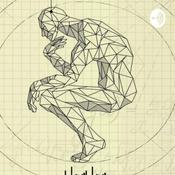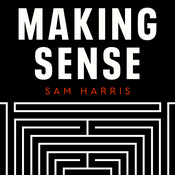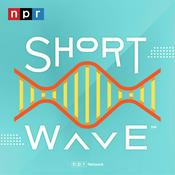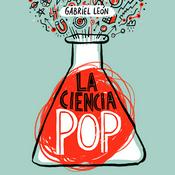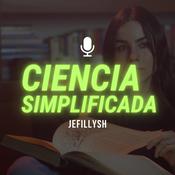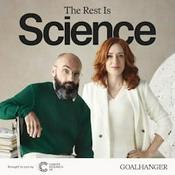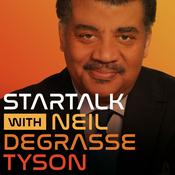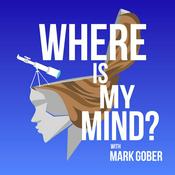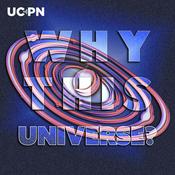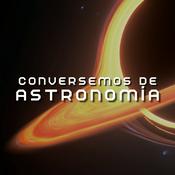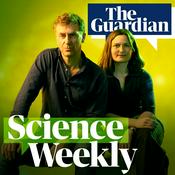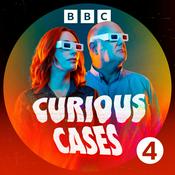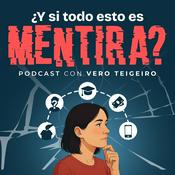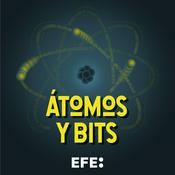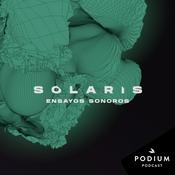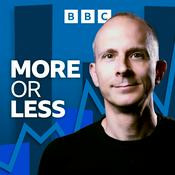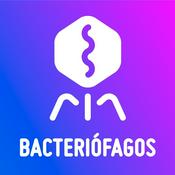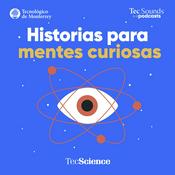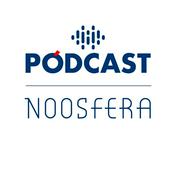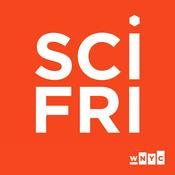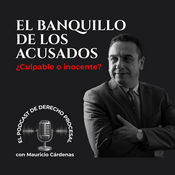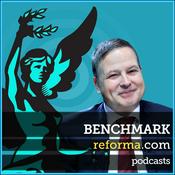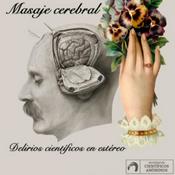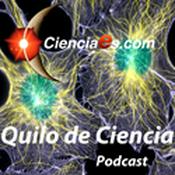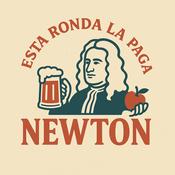220 episodios
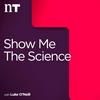
The Science of Kissing
18/12/2025 | 16 min
For his Christmas podcast, Professor Luke dives into one of the oldest, strangest and most delightful human behaviours: kissing. And yes, there really are scientists who study it. Kissologists? Why not. Someone has to keep the flame of enquiry burning under the mistletoe. Kissing isn’t new. In fact, our primate ancestors may have been at it 21 million years ago. Humans, chimpanzees, bonobos and orangutans all kiss, and the trail of evolution suggests the ancient snog goes back to a shared forebear long before Christmas was invented. So why do we do it? Luke’s answer brings joy to his immunologist’s heart: kissing is fundamentally about the immune system. It’s bonding, soothing, socially rewarding… but it’s also a biological exchange of information. When we kiss, we taste another person’s immune profile through their saliva. We’re wired to choose partners whose immune systems are similar enough to blend but different enough to give our potential offspring an advantage — the Goldilocks zone of mate selection. Kissing is also bound up in how humans live. We’re pack animals; our wellbeing depends on social closeness. For parents, early kissing and mouth-to-mouth feeding once helped babies survive. For adults, it floods the brain with oxytocin — the same hormone released during breastfeeding — building trust, comfort and connection. And yes, kissing is… messy. Saliva production surges to dissolve bacteria. Mouth microbes are swapped. Germs hitch a lift. Glandular fever is the classic “kissing disease,” especially among teenagers, and herpes simplex moves easily through saliva. The upside? Some research shows kissing can reduce allergic reactions — including a study where hives became less severe after a 30-minute smooch. The benefits stack up: reduced stress, better bonding, endorphin release, raised heart rate, improved mood, and even potential perks for your complexion. A deep kiss works 24 facial muscles, stimulates circulation and boosts collagen. Science says the Christmas kiss might be good for your skin as well as your soul.

The Science of the Hangover
11/12/2025 | 14 min
It’s that time of year when the big nights out collide with the biological reality of the morning after… and Professor Luke is here to explain exactly what’s going on in your head, your liver and your rattled nervous system. Hangovers are ancient — literally. Chimps get tipsy on fermented fruit, so our ancestors were drinking alcohol millions of years before the first Christmas party. Humans began brewing around 10,000 years ago… and the first hangover probably arrived right on cue. Luke breaks down why hangovers feel so grim: the acetaldehyde formed when alcohol is broken down in the liver; the dehydration caused by alcohol acting as a diuretic; and the rebound in neurotransmitters like glutamate that may fuel “the fear”, the “living horrors”, and that uneasy post-session anxiety listeners know too well. He runs through the classic symptoms — headache, fatigue, nausea, tremors, dizziness, sweating, irritability and a heart that seems to have joined a drum circle — and explains why some drinks make it all worse. Darker alcohols carry extra chemicals like tannins and methanol that crank up the misery, while clearer spirits tend to be less punishing. Luke also notes a surprising trend: alcohol consumption in Western countries has fallen by a third since 2001, while alcohol-free beer is booming. Even French vineyards are pulling up vines because people are drinking less wine. Maybe we’re finally copping on — and our livers are grateful. And of course, we get to the good stuff: how to avoid a hangover, and how to treat one. Hydrate between drinks, rotate in 0.0% options, eat beforehand, skip the full Irish, take B-vitamins or clove-based remedies if they help you, steer clear of paracetamol, and leave “the hair of the dog” to folklore. Sugar helps, rest definitely helps, and moderation helps most of all. Luke’s holiday message? Enjoy yourself — but pace yourself. Your future self will thank you when the sun rises on December 26th.

The Science of Haemochromatosis
04/12/2025 | 17 min
This week, Professor Luke dives into a condition that affects Ireland more than almost anywhere else on Earth: haemochromatosis, the iron-overload disorder sometimes dubbed “the Celtic disease”. And we owe this one to two listeners, Kayden and Kari, who emailed Luke asking him to shine a light on it. Here’s the remarkable thing: 1 in 83 Irish people have haemochromatosis. Globally, it’s closer to 1 in 10,000. Why are we so unusually affected? Luke explores the Founder Effect, seen in remote and island populations, where one ancient genetic mutation spreads widely over generations. Some researchers even wonder if it goes back to a single ancestor in early medieval Ireland… perhaps as far as Niall of the Nine Hostages in the 4th century. The science is striking. Haemochromatosis is caused by mutations in the HFE gene, which tell the body to absorb far too much iron from food. Instead of being flushed out, the excess iron lodges in tissue and organs, and in severe cases can damage the liver, pancreas, heart and joints. Luke explains why the iron in our blood reddens when exposed to oxygen — essentially a biological version of rust — and how that same chemistry becomes dangerous when iron builds up inside the body. Symptoms often creep in slowly: persistent fatigue, joint pain (especially in the hands), abdominal discomfort, and in more advanced cases, sallow or bronzed skin, an enlarged liver, and a higher risk of diabetes. People with haemochromatosis are also more vulnerable to infections such as listeria and hepatitis because iron can fuel bacterial growth — something pathogens love. Treatment, however, is wonderfully simple and astonishingly old-school: you remove blood. Phlebotomy — supervised blood withdrawal — lowers iron levels safely and effectively. Women often experience milder symptoms before menopause because regular blood loss naturally curbs iron accumulation. There are also medications that help reduce iron levels when needed, and lifestyle tweaks matter too: avoid iron supplements, and keep alcohol intake modest, because alcohol increases iron storage. Luke also explores a fascinating evolutionary angle: in times of famine or scarcity, people genetically predisposed to absorb more iron may have been better equipped to survive. That survival advantage could explain why the mutation became so common in Ireland and neighbouring regions — another classic Founder Effect story. It’s a condition that’s easy to diagnose, highly treatable, and crucial to catch early — and now, thanks to Kayden and Kari, you’ll understand the science behind it. Email Luke anytime with your own ideas for future episodes at [email protected] — your question might inspire the next podcast.

The Science of Cancer and the Immune System
27/11/2025 | 13 min
This week, Professor Luke digs into one of the biggest questions in cancer research: how to train the immune system to hunt tumours. Immunotherapy already works in cancers like melanoma and lung cancer — but only 20–30% of patients respond. A major new study in Nature Medicine may shift that. It tracked more than a thousand patients and found that people who’d had the Covid-19 vaccine responded twice as well to immunotherapy. Lung cancer patients lived an average 18 months longer; melanoma patients 14 months. Why would a Covid vaccine help? The RNA technology gives the immune system a jolt, boosting interferons — the proteins Luke’s lab studies — which “wake up” tumours that normally hide. Immunotherapy works best on “hot” tumours; the vaccine helps turn “cold” ones hot. Luke explains how checkpoint inhibitors remove the brakes from immune cells, dramatically extending life for some patients, though 70% still don’t benefit. Push the immune system too far and it risks attacking healthy tissue, so reaching even 50% response rates would be a huge win. Luke also recalls how science turned HIV from a death sentence into something people can live with for decades — a reminder of what long-term research can achieve. Which is why he’s dismayed that the US has cut almost half a billion dollars from RNA-vaccine research. Especially when RNA vaccines for malaria and TB are now in development. Immunotherapy isn’t a cure yet — but the science is heating up fast.

The Science of the Large Hadron Collider
20/11/2025 | 12 min
Ireland has finally joined CERN as an associate member, opening the doors of the world’s biggest scientific instrument to Irish researchers for the first time. And what a machine to step into. This week, Professor Luke takes us deep inside the Large Hadron Collider — the 27-kilometre, super-cooled, magnet-driven particle racetrack buried under the Franco-Swiss border, where protons are hurled around at 99.99991% of the speed of light and slammed together to reveal the hidden architecture of reality itself. It’s a place colder than outer space, powered by magnets a hundred thousand times stronger than Earth’s gravity, and fuelled by Einstein’s famous equation, E = mc², made real at staggering energies. Luke revisits the extraordinary discovery of the Higgs boson in 2012 — the so-called “God particle” that explains why anything in the universe has mass in the first place. He shares the joyful chaos of that summer, including the fact that the announcement itself was made in Dublin at a conference he chaired, months before Peter Higgs shared the Nobel Prize for the theory he first proposed back in the 1960s. And in classic Luke fashion, he uses a couple of gloriously groan-inducing Higgs jokes to explain what the particle actually does. There’s plenty of Irish flavour threaded through the science too. The very word “quark” comes from Joyce’s Finnegans Wake. The first particle accelerator ever built was constructed by Irish Nobel laureate Ernest Walton, and that original device now sits in the lobby of CERN like a relic from the dawn of the scientific universe. And Luke even finds time to salute Nick Cave, whose song about the Large Hadron Collider he reckons might be the greatest science song ever written. With 23 member states, 17,000 scientists on site, €4.6 billion spent on building the LHC, and €1.2 billion each year to keep it running, CERN is a cathedral to curiosity — powered by collaborations, cold atoms, and a lot of superconducting metal. As Luke explains, the collider is now undergoing enormous upgrades that will push particle physics even further into the unknown, from micro black holes to new forces of nature. It’s a reminder that when you smash particles together at nearly the speed of light, the universe doesn’t just give up its secrets… it gives up entirely new questions. For topic suggestions or comments, email Luke at [email protected].
Más podcasts de Ciencias
Podcasts a la moda de Ciencias
Acerca de Show Me the Science with Luke O'Neill
Escucha Show Me the Science with Luke O'Neill, Mándarax: ciencia en tu vida diaria y muchos más podcasts de todo el mundo con la aplicación de radio.net

Descarga la app gratuita: radio.net
- Añadir radios y podcasts a favoritos
- Transmisión por Wi-Fi y Bluetooth
- Carplay & Android Auto compatible
- Muchas otras funciones de la app
Descarga la app gratuita: radio.net
- Añadir radios y podcasts a favoritos
- Transmisión por Wi-Fi y Bluetooth
- Carplay & Android Auto compatible
- Muchas otras funciones de la app


Show Me the Science with Luke O'Neill
Descarga la app,
Escucha.

